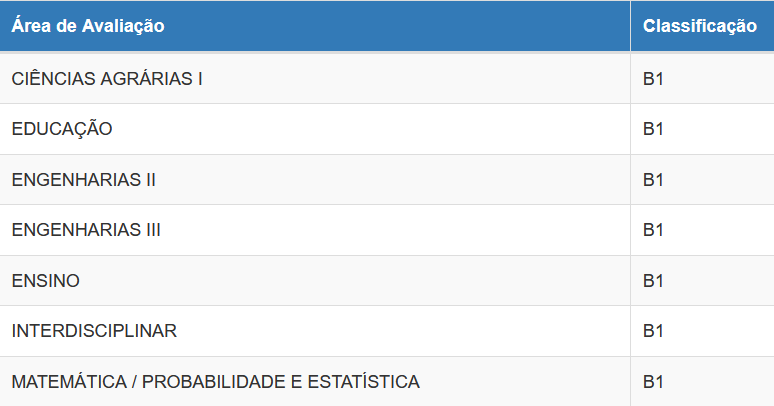Behavior of the conditioning number in the Ultra-Weak Variational Formulation, with Bessel functions as a basis for the non-homogeneous Helmholtz equation
DOI:
https://doi.org/10.35819/remat2024v10iespecialid7054Keywords:
ultra weak variational formulation, Helmholtz equation, ill-conditioned systems, cylindrical waves, Bessel functionsAbstract
The Ultra Weak Variational Formulation (UWVF) emerges as a promising methodology for simulating various wave phenomena. However, the linear system resulting from the discretization of this formulation can be highly ill-conditioned, compromising strategies for estimating the error of the approximate solution. In this research, we analyze the conditioning of the underlying linear system concerning the choice of certain families of basis functions, including classical plane waves, in the UWVF applied to a boundary value problem (BVP) for the Helmholtz equation. Among the implemented families, the one formed by cylindrical waves based on Bessel functions, scaled by a global factor also based on Bessel functions, stood out for implying a significantly lower conditioning number than those produced by other families. This prominence was observed in all numerical experiments conducted, both for the case of the homogeneous Helmholtz equation and for the non-homogeneous case, while varying both the number of functions in the family in question and the refinement of the computational meshes used.
Downloads
References
ALVAREZ, A. C.; GARCÍA, G. C.; SARKIS, M. The ultra weak variational formulation for the modified mild-slope equation. Applied Mathematical Modelling. v. 52, p. 28-41, 2017. DOI: https://doi.org/10.1016/j.apm.2017.07.018.
AULD, B. A. Acoustic fields and waves in solids. New York: John Wiley and Sons, 1973. v. I, v. II.
BAYLISS, A.; GOLDSTEIN, C. I., TURKEL, E. The numerical solution of the Helmholtz Equation for wave propagation problems in underwater acoustics. Computers & Mathematics with Applications. v. 11, n. 7-8, p. 655-665, 1985. DOI: https://doi.org/10.1016/0898-1221(85)90162-2.
BORGES, C.; GILLMAN, A.; GREENGARD, L. High resolution inverse scattering in two dimensions using recursive linearization. SIAM Journal on Imaging Sciences. v. 10, n. 2, p. 641-664, 2017. DOI: https://doi.org/10.1137/16M1093562.
CESSENAT, O. Application d'une nouvelle formulation variationnelle aux équations d'ondes harmoniques: problèmes de Helmholtz 2D et de Maxwell 3D. Orientador: Patrick Joly. 1996. 250 f. Tese (Doutorado) - Université Paris Dauphine, Paris, 1996. Disponível em: https://www.sudoc.fr/043878121. Acesso em: 26 jun. 2024.
CESSENAT, O.; DESPRÉS, B. Application of an ultra weak variational formulation of elliptic pdes to the two-dimensional helmholtz problem. SIAM Journal on Numerical Analysis. v. 35, n. 1, p. 255-299, 1998. DOI: https://doi.org/10.1137/S0036142995285873.
CHENEY, W.; KINCAID, D. Numerical Mathematics and Computing. USA: Thomson Brooks/Cole, 2007.
FARHAT, C.; HARARI, I.; HETMANIUK, U. A discontinuous Galerkin method with Lagrange multipliers for the solution of Helmholtz problems in the mid-frequency regime. Computer Methods in Applied Mechanics and Engineering. v. 192, n. 11-12, p. 1389-1419, 2003. DOI: https://doi.org/10.1016/S0045-7825(02)00646-1.
GITTELSON, C. J.; HIPTMAIR, R.; PERUGIA, I. Plane wave discontinuous Galerkin methods: Analysis of the h-version. ESAIM: Mathematical Modelling and Numerical Analysis. v. 43, n. 2, p. 297-331, 2009. DOI: https://doi.org/10.1051/m2an/2009002.
GITTELSON, C. J.; HIPTMAIR, R.; PERUGIA, I. Plane Wave Discontinuous Galerkin Methods. Research Report No. 2008-04. May 2008. Seminar für Angewandte Mathematik. Eidgenössische Technische Hochschule, CH-8092 Zürich, Switzerland, 2008. Disponível em: https://www.sam.math.ethz.ch/sam_reports/reports_final/reports2008/2008-04_fp.pdf. Acesso em: 26 jun. 2024.
HIPTMAIR, R.; LEDGER, P. D. A quadrilateral edge element scheme with minimum dispersion. Research Report No. 2003-17. December 2003. Seminar für Angewandte Mathematik. Eidgenössische Technische Hochschule, CH-8092 Zürich, Switzerland, 2003. Disponível em: https://www.sam.math.ethz.ch/sam_reports/reports_final/reports2003/2003-17_fp.pdf. Acesso em: 26 jun. 2024.
HIPTMAIR, R.; MOIOLA, A.; PERUGIA, I. A Survey of Trefftz Methods for the Helmholtz Equation. In: BARRENECHEA, G.; BREZZI, F.; CANGIANI, A.; GEORGOULIS, E. (ed.). Building Bridges: Connections and Challenges in Modern Approaches to Numerical Partial Differential Equations. Lecture Notes in Computational Science and Engineering. Springer, 2016. v. 114. p. 237-279. DOI: http://dx.doi.org/10.1007/978-3-319-41640-3_8.
HOWARTH, C. J.; CHILDS, P. N.; MOIOLA, A. Implementation of an interior point source in the ultra weak variational formulation through source extraction. Journal of Computational and Applied Mathematics. v. 271, p. 295-306, 2014. DOI: https://doi.org/10.1016/j.cam.2014.04.017.
JURAEV, D. A.; AGARWAL, P.; ELSAYED, E. E.; TARGYN, N. Helmholtz equations and their applications in solving physical problems. Advanced Engineering Science. Atlas Akademi, 2024. v. 4, p. 54-64, 2024. Disponível em: https://publish.mersin.edu.tr/index.php/ades/article/view/1500. Acesso em: 26 jun. 2024.
LAGHROUCHE, O.; BETTESS, P.; ASTLEY, R. J. Modelling of short wave diffraction problems using approximating systems of plane waves. International Journal for Numerical Methods in Engineering. v. 54, n. 10, p. 1501-1533, 2002. DOI: https://doi.org/10.1002/nme.478.
LUOSTARI, T.; HUTTUNEN, T.; MONK, P. The ultra weak variational formulation using bessel basis functions. Communications in Computational Physics. v. 11, n. 2, p. 400-414, 2012. DOI: https://doi.org/10.4208/cicp.121209.040111s.
MATLAB. Version 9.8.0.1323502 (R2020a). The MathWorks Inc., 2020. Disponível em: https://www.mathworks.com. Acesso em: 26 jun. 2024.
MEDEIROS, L. A.; MIRANDA, M. M. Espaços de Sobolev: Iniciação aos Problemas Elíticos não Homogêneos. [S. l.]: Universidade Federal do Rio de Janeiro, 2010.
MULESHKOV, A. S; CHEN, C. S.; GOLBERG, M. A.; CHENG, A. H.-D. Analytic Particular Solutions for Inhomogeneous Helmholtz-Type Equations. In: ATLURI, S. N.; BRUST, F. W. (ed.). Advanced Computational Methods in Science and Engineering. Tech Science Press, 2000. p. 27-32.
NÉDÉLEC, J.-C. Acoustic and Electromagnetic Equations: Integral Representations for Harmonic Problems. Applied Mathematical Sciences. New York: Springer, 2001. v. 144.
TEZAUR, R.; FARHAT, C. Three-dimensional discontinuous Galerkin elements with plane waves and Lagrange multipliers for the solution of mid-frequency Helmholtz problems. International Journal for Numerical Metholds for Engineering. v. 66, n. 5, p. 796-815, 2006. DOI: https://doi.org/10.1002/nme.1575.
WATSON, G. N. A Treatise on Theory of Bessel Functions. USA: Cambridge University Press, 1966.
Downloads
Published
How to Cite
Issue
Section
License
Copyright (c) 2024 REMAT: Revista Eletrônica da Matemática

This work is licensed under a Creative Commons Attribution 4.0 International License.
REMAT retains the copyright of published articles, having the right to first publication of the work, mention of first publication in the journal in other published media and distribution of parts or of the work as a whole in order to promote the magazine.
This is an open access journal, which means that all content is available free of charge, at no cost to the user or his institution. Users are permitted to read, download, copy, distribute, print, search or link the full texts of the articles, or use them for any other legal purpose, without requesting prior permission from the magazine or the author. This statement is in accordance with the BOAI definition of open access.
































